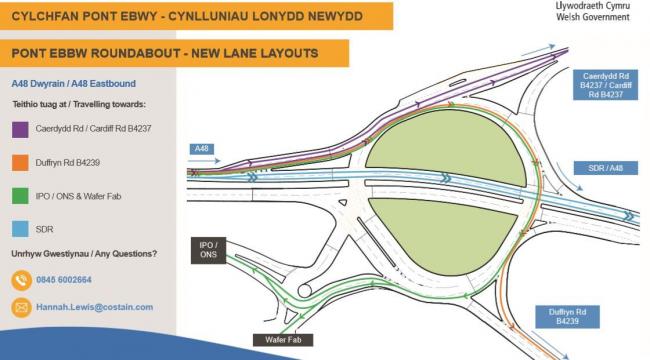Drivers still confused by Homer Watson roundabout, review shows
NEWS May 28, 2015 by
Paige Desmond Waterloo Region Record
KITCHENER — The problem with the roundabout at Homer Watson Boulevard and Block Line Road in Kitchener may be the people driving in it, according to a recent review.
A professional engineering consultant was brought in to analyze human factors that could be contributing to the higher-than-expected collisions reported there.
Despite the installation of countermeasures to try to reduce collisions, as of September 2014 there had been 81 collisions when staff predicted about 28.
The consultant concluded people just aren't yielding right-of-way.
"The design is appropriate, there's nothing physically in the roundabout that's causing the problem," said Thomas Schmidt, commissioner of transportation and environmental services.
The issue appears to be that the drivers entering the roundabout don't realize vehicles in the inside lane may exit in front of them and that they must yield to those vehicles as well as vehicles in the outside line.
The consultant said drivers in North America aren't used to roundabouts and generally pay attention to just the drivers in the curb lane they plan to enter.
"There's an onus on the individual drivers and pedestrians to educate themselves," Coun. Karl Kiefer said.
To counteract the problem, the region will spend $40,000 to send about 180,000 brochures on proper roundabout use to all the households in the region, and another $40,000 for more warning signs at the roundabout and an educational video.
"All that doesn't mean a thing if the people that are using it or are trying to use it don't pay attention to what they're supposed to be paying attention to and how it's supposed to work," Kiefer said.
Since the roundabout was constructed in 2011, more than a dozen countermeasures have been attempted to try and get through to drivers, including:
• yield signs and several variations to them;
• reducing the posted speed limit from 70 km/h to 50 km/h on the Homer Watson approaches;
• driver education programs;
• triangular pavement markings near yield lines;
• reconfiguring the southbound approach lane configuration from three through lanes to two through lanes, and dedicating the curb lane as right turn only.
Yet collisions are increasing in frequency, staff say, and continue to go well above what's expected, according to the region's collision prediction model.
But there aren't any plans to tear out the roundabout and install traffic signals.
"If we put a traffic signal there, we will continue to have collisions there," Schmidt said. "Some of those collisions will be major, someone will get hurt.
"With a roundabout we are seeing a dramatic reduction in injury accidents."
Regional review shows drivers are stopping before they enter the roundabout and most collisions are fender-benders at low speeds.
About 10 per cent of collisions result in injuries at the Homer Watson roundabout, staff say.
A 2014 Waterloo Region Record analysis of collisions between 2009 and 2013 found that traffic signals see more deaths. One person has died at a regional roundabout, and that was a single-vehicle collision involving a motorist who lost control.
For up to two years, staff will monitor whether the new signs that warn drivers that vehicles in the inside lane may exit and the education campaign have an impact, and report back to council.














